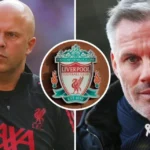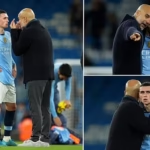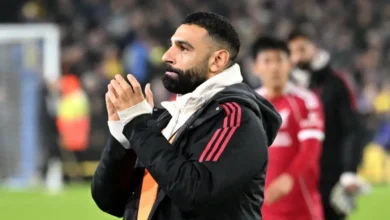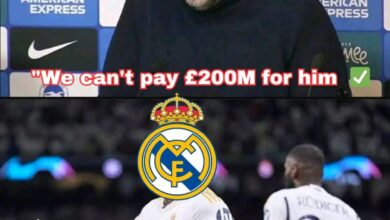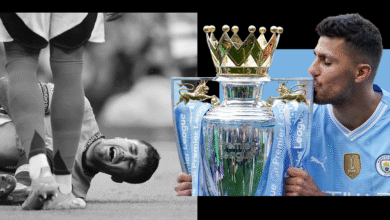Man City transfer latest as striker progress made and £33.5million deal agreed

The recent FA Cup semi-final victory over Nottingham Forest at Wembley provided Manchester City fans with more than just passage to another cup final—it offered a compelling glimpse into the club’s tactical future. As Pep Guardiola’s men secured a professional 2-0 win, one particular tactical adjustment stood out among the various storylines: Rico Lewis’s deployment in midfield. The young Englishman’s performance in this more central role didn’t just catch the eye—it potentially revealed Guardiola’s vision for both the player’s development and the team’s evolution heading into a crucial summer of change.
Lewis’s Midfield Masterclass at Wembley
Sunday’s semi-final saw Lewis operate primarily in central areas rather than his customary right-back position. This tactical tweak proved immediately effective as Lewis demonstrated remarkable comfort in these interior spaces. His ability to receive the ball in tight areas, progress play forward, and make intelligent movements between opposition lines highlighted attributes that align perfectly with Guardiola’s conception of midfield play.
Particularly impressive was Lewis’s spatial awareness in what coaches often call the “half-spaces”—those channels between central and wide areas that have become increasingly important in modern tactical approaches. His positioning in these pockets created consistent problems for Nottingham Forest’s defensive structure, allowing City to progress the ball through Forest’s organized defensive shape.
Lewis’s goal further emphasized his midfield credentials. Displaying the attacking instinct and finishing ability that elite midfielders require, Lewis timed his run perfectly and executed his finish with the composure of a seasoned central performer. Beyond this headline moment, his repeated forward runs showcased a player with natural midfield instincts—understanding when to hold position and when to exploit space ahead.
What makes Lewis’s adaptation to this role even more impressive is the technical security he demonstrated. Operating in midfield requires exceptional ball retention skills, especially in a Guardiola system where possession is paramount. Lewis’s impressive 94% pass completion rate throughout the match—many of these passes executed under significant pressure—illustrated his suitability for these central responsibilities.
The Right-Back Conundrum
Lewis’s successful midfield audition creates both opportunity and necessity for Manchester City heading into the transfer window. His evident comfort in a central role suggests his long-term future lies in midfield, potentially providing an internal solution to some of the creative void that Kevin De Bruyne’s departure will create. However, this positional evolution generates an obvious squad requirement: City must strengthen at right-back.
The current right-back situation at City has been makeshift for much of the season. Kyle Walker’s departure to AC Milan created a vacancy that has been filled through a combination of positional adaptation and rotation. Manuel Akanji has frequently deputized there despite being primarily a center-back, while Matheus Nunes—naturally a central midfielder—has somewhat surprisingly emerged as another alternative in recent months.
While both players have performed admirably when called upon, neither represents an ideal long-term solution for a position of such tactical importance in Guardiola’s system. Akanji lacks the natural attacking instincts and acceleration that modern full-backs require, while Nunes’s technical gifts are arguably better utilized in central areas where he can influence play more directly.
Summer Transfer Priorities
As Manchester City approach a summer of inevitable transition, the need for right-back reinforcement stands alongside several other positional requirements. Guardiola’s squad, despite its continued excellence, requires strategic renewal in multiple areas:
Right-Back
As previously reported by Fraser Fletcher for TeamTalk, Bayer Leverkusen’s Jeremie Frimpong represents one potential target. The Dutch defender’s explosive pace, attacking output, and Bundesliga experience make him an intriguing prospect. His seven goals and ten assists in the Bundesliga this season demonstrate the kind of offensive contribution that Guardiola values from his full-backs.
The alternative suggestion of permanently converting Manuel Akanji to right-back appears less optimal. While Akanji’s intelligence and defensive solidity offer certain advantages, his limited attacking capabilities would restrict City’s buildup options on that flank—particularly important if Lewis transitions to midfield full-time.
Creative Midfield
Beyond the right-back position, addressing the midfield creativity gap created by De Bruyne’s departure represents perhaps the most significant challenge. While Lewis’s emergence offers one internal solution, replacing De Bruyne’s unique combination of vision, technique, and execution likely requires additional investment.
The club might pursue an established elite creator to maintain immediate competitiveness while simultaneously developing Lewis as a longer-term successor. This two-pronged approach would allow Lewis to continue his development without the immediate pressure of being considered De Bruyne’s direct replacement—a burden that could potentially hinder his progress.
Goalkeeper
The goalkeeper situation represents another area requiring resolution. Ederson’s future remains uncertain amid reported interest from Saudi Arabian clubs, while Stefan Ortega’s impressive performances when called upon have prompted questions about the hierarchical arrangement between the posts.
Should Ederson depart, City would need to decide whether to promote Ortega to undisputed first choice or enter the market for an established elite goalkeeper. Their decision will likely be influenced by financial considerations alongside tactical preferences regarding the specific distribution abilities required for Guardiola’s build-up play.
Left-Back
The left-back situation highlights another potential opportunity for positional realignment. Acquiring a specialized left-back would enable Josko Gvardiol to transition into his natural center-back position permanently. While Gvardiol has performed admirably at left-back, his highest ceiling likely remains in central defense, where his combination of physical presence, technical ability, and progressive passing can be fully maximized.
Lewis’s Midfield Potential
The potential permanent transition of Rico Lewis to midfield represents one of the most intriguing developmental storylines at Manchester City. At just 19 years old, Lewis already demonstrates the technical security, tactical intelligence, and spatial awareness that Guardiola demands from his midfielders.
Several aspects of Lewis’s profile suggest he could excel in this new role:
Technical Security
Perhaps Lewis’s most immediately apparent quality is his exceptional technical security in tight spaces. His first touch consistently creates favorable angles for his second, while his close control enables him to retain possession under pressure—a non-negotiable attribute for midfielders in Guardiola’s system.
Game Intelligence
Lewis demonstrates remarkable game intelligence for his age, consistently selecting appropriate options based on the specific tactical context. His decision-making regarding when to retain possession, when to progress the ball, and when to make attacking runs reveals a mature understanding of positional play principles.
Positional Adaptability
Having already demonstrated versatility in playing at right-back, left-back, and now midfield, Lewis exhibits the positional adaptability that Guardiola particularly values. This flexibility could make him an especially valuable squad component during a transitional period, capable of providing solutions across multiple positions.
Progressive Passing
Lewis’s passing range—particularly his ability to break opposition lines with penetrative forward passes—aligns perfectly with the requirements for a Guardiola midfielder. Against Nottingham Forest, he completed several passes that eliminated multiple defensive players, creating advantageous situations in advanced areas.
Off-Ball Movement
Perhaps most encouraging for his midfield future is Lewis’s sophisticated off-ball movement. His understanding of when to offer support, when to rotate positions, and when to exploit space ahead demonstrates the spatial intelligence that distinguishes elite midfielders from merely good ones.
The Implications of Lewis’s Repositioning
Should Lewis complete his transition to midfield, the implications extend beyond simple positional adjustment. His development represents a potential solution to one of City’s most pressing strategic challenges: finding internal answers to inevitable squad turnover.
City’s sustained excellence has been built upon a combination of elite external recruitment and exceptional internal development. Players like Phil Foden have progressed from academy prospects to world-class performers under Guardiola’s guidance, providing both sporting excellence and financial efficiency.
Lewis potentially represents the next iteration of this successful developmental model. Rather than seeking an external replacement for every departing star, developing versatile players capable of adapting to new roles offers a more sustainable approach—particularly important as financial regulations become increasingly restrictive.
Furthermore, Lewis’s potential midfield progression creates tactical flexibility that could prove valuable amid fixture congestion. His capacity to operate effectively across multiple positions provides Guardiola with rotation options that maintain tactical continuity rather than requiring systematic adjustment.
Conclusion: A Summer of Strategic Decisions
As Manchester City approach a pivotal summer, Rico Lewis’s midfield emergence represents both opportunity and obligation. His evident suitability for central responsibilities offers an exciting developmental pathway while simultaneously creating an urgent need to strengthen at right-back.
The club’s recruitment team now faces the challenge of finding a right-back solution that complements their existing squad profile while enabling Lewis’s positional transition. Whether they pursue an established star like Jeremie Frimpong or identify a less heralded talent aligning with their technical and physical requirements, this signing could prove crucial to facilitating an internal solution to their midfield evolution.
Sunday’s performance at Wembley provided compelling evidence that Lewis possesses the attributes required to excel in midfield. His comfort in tight spaces, progressive passing, intelligent movement, and goal threat all suggest a player with the potential to develop into a midfield cornerstone. The question now becomes whether City’s decision-makers share Guardiola’s apparent vision for the youngster—and are willing to make the complementary squad adjustments required to realize it.
As City pursue their third consecutive FA Cup triumph, the emergence of Rico Lewis as a midfield option could ultimately prove just as significant to their long-term future as the immediate silverware prospects. In the perpetual balancing act between present success and future development, Lewis’s midfield transformation potentially offers that rarest of things: a solution addressing both objectives simultaneously.




